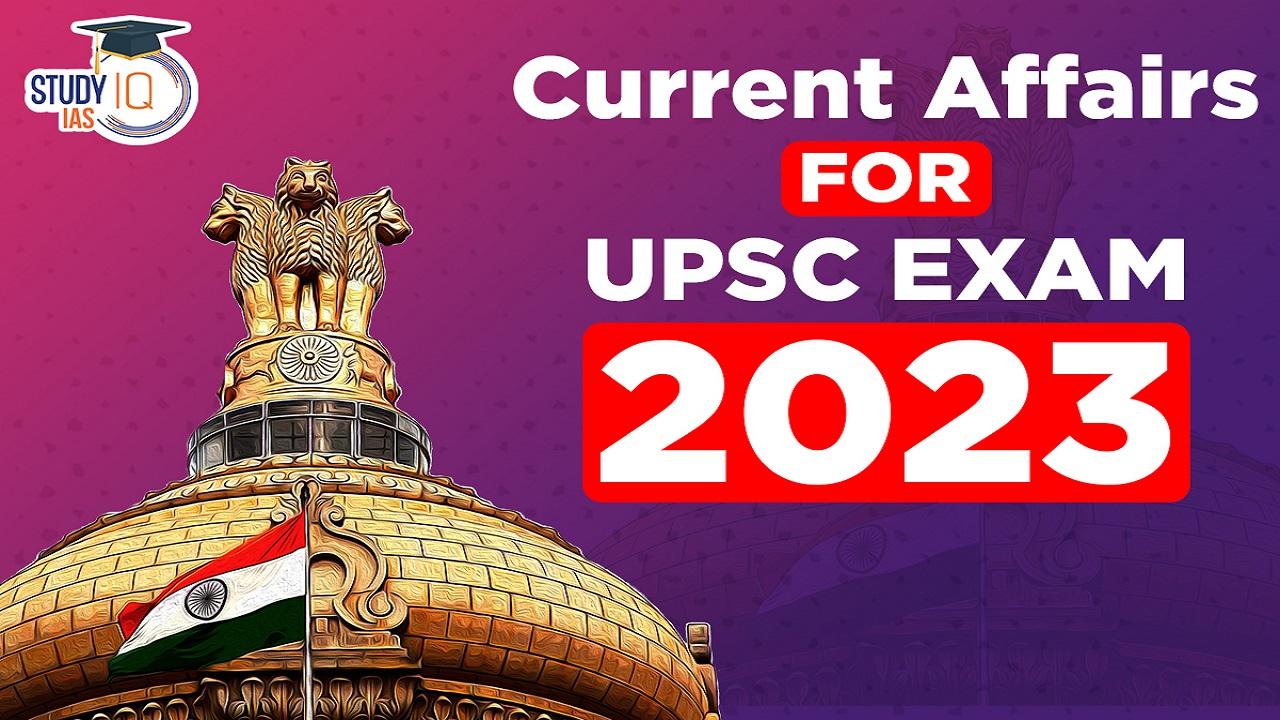Current Affairs 5th August 2023 for UPSC Prelims Exam
Kalbelia Dance
Context: Kalbelia dance was performed during the National Folk and Tribal Art Festival in Bhopal recently.
About Kalbelia Dance
- Kalbelia Dance is a traditional Indian dance form that originated in the state of Rajasthan.
- In 2010, the Kalbelia folk songs and dances of Rajasthan were declared a part of its Intangible Heritage List by the UNESCO.
- The Kalbelia dance is a folk dance integral to the Kalbelia culture.
- This dance is also known as Sapera dance since the Kalbelias are known as traditional snake charmers. This nomadic tribe used to travel from place to place trading snake venom.
- The movements and costume of the dance is said to reflect the close association of the tribe with snakes. Both males and females participate in this dance.
- The females are the dancers while the males accompany them on a variety of musical instruments.
- A large variety of musical instruments are used to accompany this dance form like the pakhawaj, dholak, jhanjhar, harmonium and sarangi.
- However, the characteristic musical instrument of the dance is the pungi or been. This fast-paced dance showcases the performer’s flexibility. The dancers wear the distinctive black lehengas and elaborate jewellery.
- Kalbelia songs disseminate mythological knowledge through stories, while special traditional dances are performed during Holi, the festival of colours.
- The songs also demonstrate the poetic acumen of the Kalbelia, who are reputed to compose lyrics spontaneously and improvise songs during performances.

Features of the Kalbelia Dance
- Rapid footwork: The fast, intricate footwork of the Kalbeliya dance is the highlight of this folk dance. The dancers move their feet in quick, sharp movements that form intricate patterns on the floor.
- Swirling skirts: The colorful skirts of the female dancers swirl gracefully as they move, adding to the beauty of the dance.
- Hand and arm movements: The dancers use their hands and arms to create graceful, fluid movements that are integral to the dance.
- Singing: Kalbeliya dancers often sing along to the music as they dance, adding to the atmosphere of the performance.
- Cymbals and drums: Traditional Kalbeliya music is accompanied by drums and cymbals, which help to create a lively, energizing atmosphere.
Current Affairs 4th August 2023 for UPSC Prelims Exam
Election Commission
Context: The Supreme Court has dismissed a petition challenging the appointment of Arun Goel as Election Commissioner.
About Election Commission
- Definition: Election commission is a constitutional body established under article 324 which is responsible for holding free and fair elections in the country at the level of the centre and state as well as elections to the post of president and vice president.
- It was first established on 26 January, 1950.
- Composition:
- At present it constitutes of one Chief Election Commissioner and two Election Commissioners who are appointed by the President.
- The mandate of election commission is to conduct free and fair elections.
- Constitution of India does not prescribe qualification of members and it does not bar retiring member for other government posts.
- The term of members is not specified in the constitution. Government has decided tenure of 6 years/65 years of age whichever is earlier.
- Expenditure of ECI not charged on consolidated fund of India.
- Removal of Chief Election Commissioner is done by President on proved misbehaviour/ incapacity. This is subject to resolution passed by both houses by a special majority.
- The Election Commissioners are removed by President on recommendation of Chief election commissioner.
- Functions:
- To notify and administer elections to Lok Sabha, Rajya Sabha, State Legislative Assemblies, President and Vice President.
- To prepare and periodically revise electoral rolls and register all eligible voters under Article 325.
- To determine territorial constituencies based on delimitation act.
- To regulate the political parties, their registrations, recognition and prescribe limits on campaign expenditure of parties and candidates.
- To decide symbol allotment in case of party split/merger.
- To disqualify a member under Representation of Peoples Act.
- To cancel/re-conduct election in case of booth capture/rigging/malpractice.
- To enforce the Model code of conduct.
Red Sanders
Context: The Directorate General of Foreign Trade (DGFT) has issued amendments in the Export Policy of Red Sanders wood.
About Red Sanders Wood
- The species, Pterocarpus santalinus, is an Indian endemic tree species (growing up to a height of 10 to 15 metres), with a restricted geographical range in the Eastern Ghats.
- It was classified as ‘near threatened’ in 2018. However, it has fallen back into the ‘endangered’ category in the IUCN Red List in 2021.
- It is also protected under CITES (Appendix II) and the Wildlife Protection Act 1972 (Schedule IV).
- The species is endemic to a distinct tract of forests in Andhra Pradesh and is a very slow-growing tree species that attains maturity in natural forests after 25-40 years.
- It is highly sought after throughout Asia, especially in China and Japan, for use in cosmetics and pharmaceutical items as well as for building furniture, woodcraft and musical instruments.
- They are also known for their healing capabilities and rich colour.
- The species has experienced a population decline of 50-80% in the last 50 years due to smuggling, forest fires, cattle grazing and other anthropogenic threats and spread of diseases like spike disease.
- In 2016, the Andhra Pradesh Forest Act was amended to give special status of protection and Red Sanders offences were made cognisable and non-bailable.

Ratna Status to CPSEs
Context: The Finance Ministry upgraded two oil sector companies, Oil India and ONGC Videsh, to Maharatna and Navratna categories of central public sector enterprises (CPSEs), respectively.
Ratna Status to CPSEs
- The Central Public Sector Enterprises (CPSEs) are run by the Government of India under the Department of Public Enterprises of Ministry of Heavy Industries and Public Enterprises.
- The government grants the status of Navratna, Miniratna and Maharatna to CPSEs based upon the profit made by these CPSEs.
- The Maharatna category has been the most recent one since 2009, other two have been in function since 1997.
Criteria for grant of Maharatna status to CPSEs
The CPSEs meeting the following criteria are eligible to be considered for grant of Maharatna status.
- Having Navratna status,
- Listed on Indian stock exchange with minimum prescribed public shareholding under SEBI regulations,
- An average annual turnover of more than Rs. 25,000 crore during the last 3 years,
- An average annual net worth of more than Rs. 15,000 crore during the last 3 years,
- An average annual net profit after tax of more than Rs. 5,000 crore during the last 3 years, and
- Should have significant global presence/international operations.
Criteria for grant of Navratna status to CPSEs
- The CPSEs which are Miniratna I, Schedule ‘A’,
- Have obtained ‘excellent’ or ‘very good’ MOU rating in three of the last five years, and
- Having composite score of 60 or above in following six selected performance indicators are eligible to be considered for grant of Navratna status.
- Net Profit to Net worth.
- Manpower Cost to total Cost of Production or Cost of Services.
- PBDIT to Capital employed.
- PBIT to Turnover.
- Earnings Per Share.
- Inter Sectoral Performance.
Criteria for grant of Miniratna status to CPSEs
- Miniratna Category-I status:
- The CPSEs which have made profit in the last three years continuously,
- Pre-tax profit is Rs.30 crores or more in at least one of the three years and
- Have a positive net worth are eligible to be considered for grant of Miniratna-I status.
- Miniratna Category-II status: –
- The CPSEs which have made profit for the last three years continuously,
- Have a positive net worth are eligible to be considered for grant of Miniratna-II status,
- Miniratna CPSEs should have not defaulted in the repayment of loans/interest payment on any loans due to the Government, and
- Miniratna CPSEs shall not depend upon budgetary support or Government guarantees.


 Current Affairs 27th April 2024 for UPSC...
Current Affairs 27th April 2024 for UPSC...
 Small Finance Banks, Key Features and Op...
Small Finance Banks, Key Features and Op...
 Glacial Lakes and Remote Sensing
Glacial Lakes and Remote Sensing

















